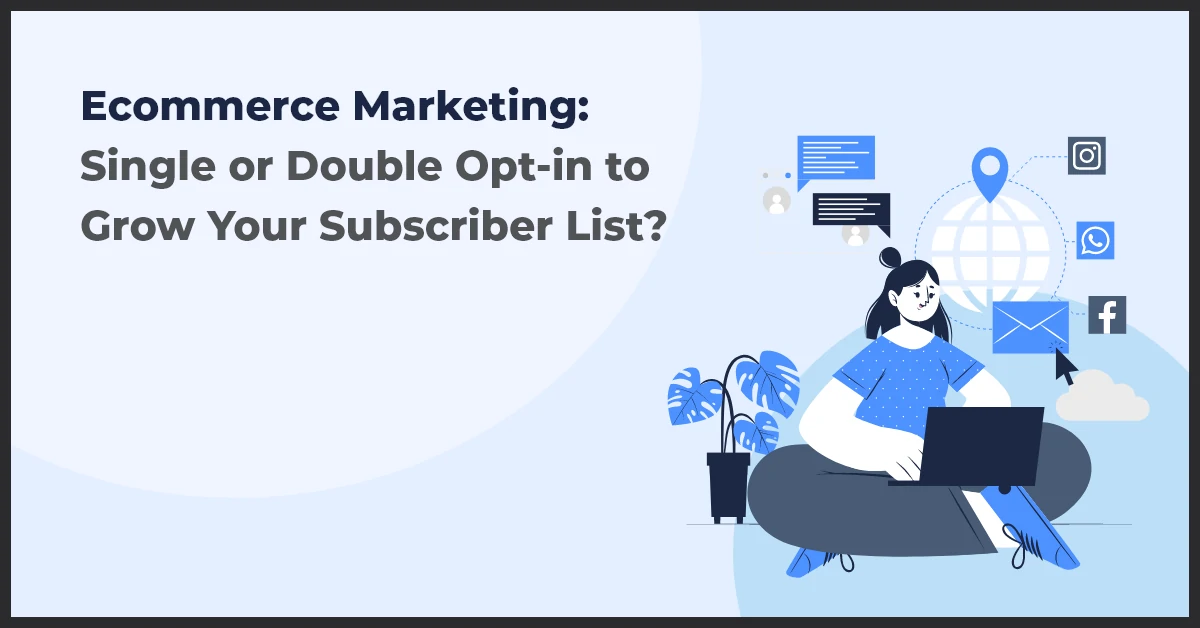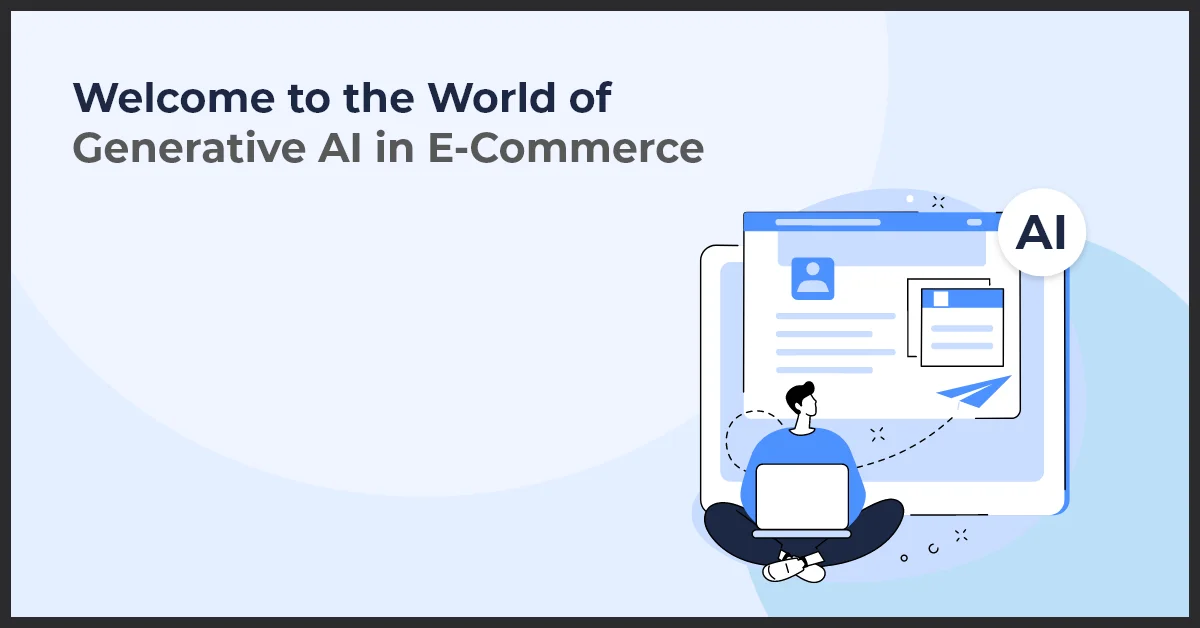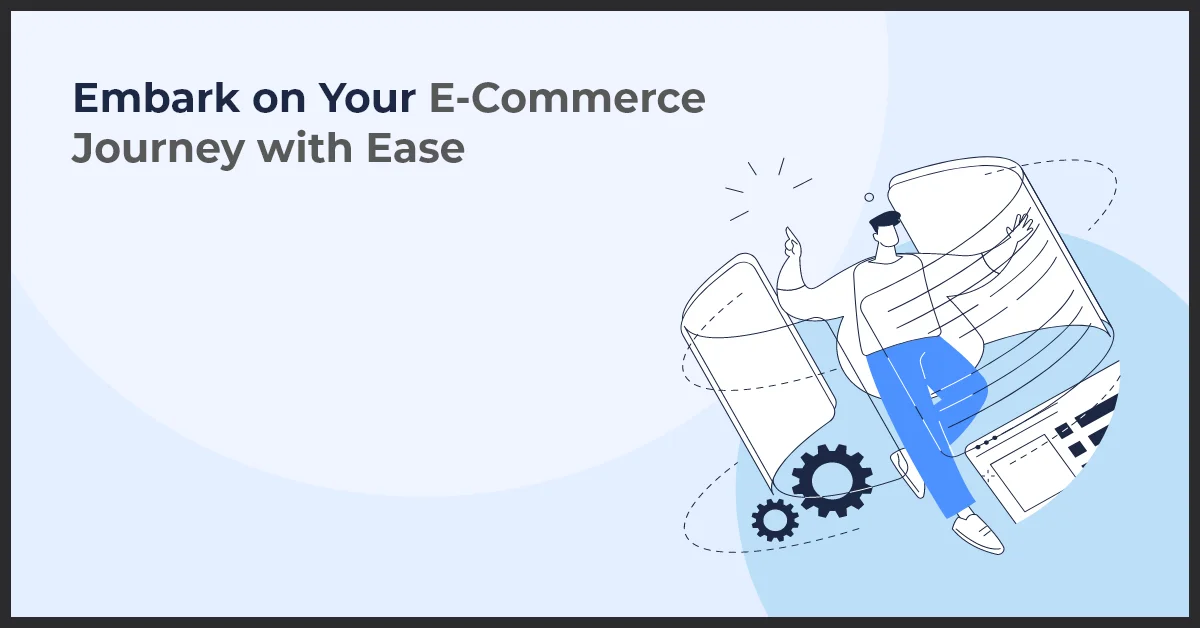Ecommerce Marketing: Single or Double Opt-in to Grow Your Subscriber List?

Published on: July 7, 2022
Updated on: June 26, 2024
623 Views
- Ecommerce
19 min read
Email is, by far, the most impressive tool for communication as 99% of consumers check their emails every day. That is probably why email marketing has a 4,200% ROI.
But sending emails to users alone doesn’t guarantee conversions. It requires you to have a valid and engaged subscriber list.
Increasing conversions via email marketing campaigns also depends on whether you prefer single or double opt-in. While deciding on investing in email marketing campaigns might be easy, it is not the same when choosing single opt-in or double opt-in. Fortunately, knowing the obvious risks and benefits of the two can help.
In this blog post, we will do a detailed comparison of single and double opt-in marketing and their use cases. By the end of it, you will be able to make an informed decision about which option will offer better conversions for your ecommerce brand.
Single Opt-In vs. Double Opt-In: Comparing Risks and Benefits
Both single opt-in and double-opt-in work by involving customers through emails.
In a single opt-in, the new email address is added to your mailing list without any active confirmation from the subscriber.
In double opt-in, also called a confirmed opt-in, there is an additional step for confirmation. This is done by either clicking on a confirmation link during subscription activation or sending a confirmation email request after filling out the form.
In a double opt-in approach, the signup process includes a simple unchecked opt-in box. Once the user submits the form and checks the opt-in box, they receive an email asking them to give their consent, implying a confirmed opt-in. This active approach has a better success rate as the subscriber actively seeks to engage with your business.
Another more passive approach is pre-checked opt-in boxes. Users who stumble upon your brand and sign up to know more often ignore the pre-checked consent boxes and give their personal information.
Once users complete the form submission, it is taken as a confirmation of their participation in email marketing. The form submission could happen from anywhere—an online trade show, an e-commerce store, in a lead generation form, on social media pages, or in a highly-incentivized interaction with brands like a contest.
At a first glance, a single opt-in appears to be the better option because it does not put an additional onus on the customer. However, this may not always be the case. The risk-benefit analysis is necessary to understand how and where single and double opt-in work best.
The following points help analyze these two methods:
Mail List Growth
The one-step process of a single opt-in means the completion of the signup process is quick, and the scope of failure due to lack of completion is low. Your email subscribers come from various sources including lead magnets, pop-up forms on your ecommerce website, and signup forms. These forms require voluntary data submission by the user. In such a scenario, confirming if users really want to give their details seems unnecessary.
Based on this point alone, a single opt-in offers a faster way for email list growth. And using it can lead to around 20-30% speedier list growth.
In contrast, a double opt-in is a two-step signup process with lower opt-in completion rates. But it also means those who complete the process are serious about their engagement with your business.
Total Engagement
Following up on the last point—a double opt-in process is a better approach to engaging customers. It reduces the possibility of spamming subscribers, thereby ensuring higher engagement and lower unsubscribe rates.
Since a double opt-in process requires a user’s confirmation twice, it helps build high-quality leads and weeds out bots from your list. On the other hand, a single opt-in approach has lower engagement and a higher unsubscribe rate.
Deliverability
Double opt-in subscription results in higher deliverability as the emails are sent to recipients who have shown willingness and eagerness to engage with your brand. The odds of spamming, in this case, are low as it offers more robust protection from malicious signups and typo spam traps.
In the single opt-in signup, the deliverability of the mail is at a higher risk, which can potentially impact your email sender score. The email service provider (ESP) might recognize your marketing emails as spam and eventually, junk, or in the worst case, block your emails. It can be an uphill task to fix your email domain reputation after that.
Proof of Opt-in
Again, double opt-in provides more substantial proof of consent than single opt-in. Double opt-in is a better option for minimizing risks of financial penalties, while single opt-in leads to higher rewards and risks.
Further, some businesses can only opt for the double opt-in process because:
- Their ESP mandates it.
- Country-specific laws such as CAN-SPAM laws, Canada Anti-Spam Laws, and GDPR demand businesses seek customer consent.
- They lack sight into their deliverability.
- They are not ready to deal with potential blocking or junking at one or more inbox providers.
- Their industry requires stronger permission because of regulations concerning marketing to minors, and healthcare or financial information.
If each opt-in process has advantages and disadvantages, which is the right one for your business?
There is no simple answer or a straightforward approach.
So how do you create an effective email marketing strategy by selecting a single or double opt-in? One of the crucial determining factors involves a combination of these three—the when, where, and which (kind) of email marketing:
- Signup: When does the customer sign up?
- Context: At what point or where do they sign up?
- Confirmation: Which kind of confirmation email do they receive?
Let us look at some use cases to understand how brands use this approach to determine which opt-in process to use.
Use Cases and Success Stories
Opt-in email marketing provides a cost-effective digital marketing approach. It is effective in all aspects, be it relationship building, brand awareness, content promotion, lead generation and nurturing, or product marketing.
Below are some use case scenarios, along with examples that show exactly that.
Relationship Building
The clearest examples of an email opt-in are found on any brand website that asks its users to sign up for its newsletter. It can be as part of a blog post, the About Us page, the sidebar, the Header, or a landing page.
Brands like Ray-Ban allow their customers to reach out directly through their single opt-in option on their website, while others like Puma also have the same signup option, followed by an email asking to confirm their subscription.
Brand Awareness
Email opt-ins are a straightforward approach to telling your brand story and increasing brand awareness and recall value, especially for those not ready to purchase.
Like the brand, Upworthy’s single opt-in newsletter subscription page connects its utility (of delivering viral news) to something popular across the internet–cats. It associates a popular trigger, “cats,” with its content so that people can relate and build a memorable brand image. Upworthy also creates a sense of urgency and is transparent about its privacy policy.
Content Promotion
An excellent approach to promote your brand, its use cases, and its purposes to customers and online visitors alike is through content. Email is a perfect way of putting yourself out as a subject-matter expert and, in the process, establishing your brand too.
For instance, Wrike promotes its ebook through a single opt-in subscription while Pottermore, the official home page of Harry Potter, uses double opt-in for users to access the latest writings and articles of J.K Rowling.
Simple Opt-in with Lead Generation
The bread and butter of a marketer’s work are generating and nurturing leads. When you ask someone for their info, you need to ensure that they also get something worthwhile.
Lead generation with a simple opt-in process can increase conversions by providing user-specific information. With minimum form fields, an explicit privacy policy, and a well-written copy, an opt-in form or page can compel users to give their consent.
For instance, Frank Body, a unique coffee body scrubs company, has a simple opt-in form when a user visits its website. This non-intrusive yet catchy form pops up at the bottom right-hand corner after a few seconds of being on their website. The positioning, well-written copy, incentive, and expectation settings make Frank Body’s opt-in form a great strategy to generate leads.
Why Your Opt-in Method Matters for Business Growth
Your choice between single or double opt-in can significantly impact the trajectory of your business growth, shaping everything from how subscribers view your brand to how effectively you are able to navigate the complex world of email marketing. Let's dive into some of the key reasons this decision is so pivotal.
Impact on Subscribers' Initial Perception of the Brand
Your opt-in method is often the subscriber's first interaction with your brand, setting the tone for the future relationship. First impressions matter, and the opt-in experience can influence how potential customers perceive the trustworthiness and professionalism of your business. A double opt-in might project a more diligent and security-conscious brand image, while a single opt-in could be seen as more user-friendly and accessible.
Effects on Email Deliverability and Sender Reputation
Email deliverability and sender reputation are the linchpins of successful email marketing. A safe and verified list, typically associated with double opt-in, generally results in higher deliverability rates and a better sender reputation, as ISPs can see that recipients are actively agreeing to receive your emails. On the flip side, a single opt-in method might lead to higher bounce rates and spam complaints, potentially harming your reputation and the effectiveness of your campaigns.
Relevance to GDPR Compliance and Privacy Laws
In the age of rigorous data protection regulations like GDPR, compliance should be top of mind for any business. Double opt-in procedures align neatly with these privacy laws, offering clear evidence that subscribers have consented to receive emails. This is crucial as businesses strive to maintain transparency and respect for user privacy, which is not only a legal matter but also a sign of respect for your subscribers.
The Balance Between Quantity and Quality of Email Addresses Collected
It's an age-old debate in email marketing: should you prioritize quantity or quality? While a single opt-in may result in a larger list more quickly, it may be peppered with low-quality leads that could affect engagement negatively. A double opt-in process, conversely, garners a smaller, but more engaged and committed audience. Ultimately, the balance you strike will depend on your business goals and how you measure success.
Pros and Cons of Single Opt-in
Are you considering the simplest way for users to join your subscriber list? Single opt-in may be just what you're looking for. This straightforward method could streamline your sign-up process, but it's important to weigh the benefits against some potential downsides.
Ease of Subscription: No Fuss, No Muss
Single opt-in is as easy as it gets for your future subscribers. With just one click, they're on the list. There's no need for them to confirm their email address or jump through additional hoops. This simplicity can lead to a larger list, quickly, as it removes barriers that might deter someone from completing the sign-up process.
Risks of Simplifying Your Opt-in Process
- Engagement Rates: While it's easier to get sign-ups, these subscribers may be less engaged. If they didn't think twice about subscribing, will they think twice about opening your emails?
- Spam Traps: Simplicity isn't always bliss. The single opt-in process can become a magnet for bots and fake email addresses, tarnishing your list quality and potentially harming your sender reputation.
Impact on Email Campaign Metrics
Opting for the single opt-in method might mean your email campaign performance metrics could take a hit. When your list contains more casual subscribers (or worse, non-human ones), metrics like open rates and click-through rates are likely to reflect lower engagement. Analyzing the health of your subscriber list suddenly becomes more of a challenge, which in turn could impact your marketing strategies and bottom line.
Exploring the Dual Sides: Pros and Cons of Double Opt-in
Double opt-in procedures add an extra layer of confirmation to your email subscription process, requiring a bit more effort from your prospective subscribers but offering potential gains in the quality of your contact list. Let's take a closer look at what this could mean for your subscriber list growth.
Pros of Double Opt-in
- Increased Subscriber Engagement: By taking the extra step to confirm their subscription, users are demonstrating a higher level of interest and commitment. This often translates to better engagement with your content.
- Higher Quality Email Lists: The double opt-in process helps filter out invalid or fake email addresses. This means you're building a list with genuine contacts, leading to improved email delivery rates and sender reputation.
Cons of Double Opt-in
- Slower List Growth: It's a trade-off—by adding an additional step in the signup process, the growth rate of your subscriber list may slow down. Some users might not complete the confirmation step, leading to a smaller, albeit more engaged, list.
- Potential for Confusion: There's always a chance that the confirmation email lands in the spam folder or is overlooked by the subscriber. This may lead to confusion and a lower overall signup rate.
In weighing the pros and cons of implementing a double opt-in system, consider your business goals and the value of a highly engaged, clean email list. Remember, the quality of your subscribers often trumps quantity when it comes to long-term email marketing success.
Lead Generation Techniques and Opt-In Methods
Welcome to the pivotal part of growing your subscriber list - mastering lead generation techniques and refining opt-in methods! Whether you've chosen single or double opt-in, these strategies will help you effectively engage subscribers and fuel your list growth.
Utilizing Marketing Automation Tools
One of the most efficient ways to handle the opt-in process is by using marketing automation tools. These tools can simplify the opt-in procedure, ensuring a smooth experience for your users while also providing you with the necessary analytics to track your performance.
Strategies for Effective Subscriber Engagement
No matter which opt-in method you select, engaging your subscribers is fundamental. Consider employing a personalized approach in your email campaigns, leveraging data to tailor the content. This can make your subscribers feel valued and increase the likelihood of sustained interaction.
Lead Magnet Ideas to Entice Opt-Ins
Ever heard the saying, "something for something"? That's the essence of a lead magnet. Provide value first to coax potential subscribers into opting-in. Here are a few enticing lead magnet ideas:
- An informative eBook or whitepaper
- Exclusive access to webinars or educational series
- Templates or tools that simplify tasks
- Discount codes or special offers
By implementing these lead generation techniques and optimizing your opt-in strategy, you're well on your way to establishing a robust, engaged subscriber list. Remember, the key is to be consistent and continually analyze and tweak your approach for the best results. Happy list building!
Email List Segmentation Based on Opt-In Type
In the realm of email marketing, segmentation is the buzzword that can make all the difference in your campaigns. Segmenting your email list based on the opt-in type of your subscribers is a smart strategy to ensure your messages resonate more specifically with their expectations and the level of engagement they have shown. So, let's dive into what this looks like in practice.
Targeted Campaigns for Precision Marketing
By creating separate segments for single and double opt-in subscribers, you can tailor your marketing efforts more accurately. A precise approach often leads to enhanced open rates, better click-through rates, and ultimately, a more successful email campaign.
- Single Opt-In Subscribers: These individuals may prefer straightforward, broad-focused content since they didn't go through the extra confirmation step. They are in your network, but may not be fully engaged yet.
- Double Opt-In Subscribers: These subscribers have shown a higher level of commitment and interest in your content. They are more likely to appreciate targeted, in-depth information and are often more receptive to conversion efforts.
Content Customization for Subscriber Preferences
The type of opt-in method your subscribers chose can also reflect their content preferences. For instance:
- Single Opt-In: You might opt for more general email newsletters or broader announcements that cater to their level of engagement.
- Double Opt-In: Conversely, you can send more personalized, detailed content, perhaps even exclusive offers or advanced resources, to double opt-in subscribers to match their expected level of interest.
Optimizing Conversion Rates for Each Segment
Lastly, knowing whether a subscriber is from a single or double opt-in can inform your conversion rate optimization strategies. For example:
- Single Opt-In Segment: You might introduce a series of welcome emails that progressively engage these subscribers, nudging them towards a double opt-in or more involved actions.
- Double Opt-In Segment: Since these subscribers have already demonstrated a deeper engagement, you can focus on conversion tactics that align with their more advanced stage in the customer journey. This might involve targeted promotions or personalized discounts that encourage an immediate purchase or another form of conversion.
Understanding and utilizing the nuances between single and double opt-in preferences empowers you to create more effective, engaging, and conversion-oriented email marketing campaigns. Start segmenting today, and watch as your subscriber list becomes a more potent source of business growth.
Monitoring Email Campaign Performance Metrics
Choosing between single or double opt-in methods is just the beginning. To truly understand their impact on your subscriber list growth, it's crucial to monitor your email campaign's performance metrics closely. Let's dive into the data-driven world of email marketing, where numbers tell tales of success and areas ripe for improvement.
Tracking Metrics to Assess the Impact of Opt-in Methods on Campaign Success
It's not enough to just collect subscribers; you need to know how they're interacting with your emails. By tracking key performance indicators, you can gauge the effectiveness of your opt-in approach. Are your single opt-in subscribers more active or do those who completed the double opt-in process engage more? Only the numbers will tell.
Analyzing Subscriber Engagement Levels Across Single and Double Opt-in Lists
Engagement is the currency of email marketing. By closely analyzing open rates, click-through rates, and conversion rates, you'll start to see patterns emerge. Do subscribers from your double opt-in list have higher open rates? Are the clicks more frequent with the single opt-in crowd? This analysis will be pivotal in understanding your audience's behavior.
Making Data-Driven Decisions to Refine the Process
Armed with insights, you're now in a position to make informed decisions. Perhaps it's time to tweak your sign-up form or to test a new welcome series for new subscribers. Whatever the decision, let the data lead the way. After all, the success of your email list is not just in its size, but in its engagement and conversion rates.
- Consider A/B testing different opt-in strategies to see what yields the best performance.
- Use segmentation to send targeted emails based on subscriber preferences and behaviors.
- Refine your strategy over time by keeping a close eye on how changes affect your email metrics.
User Experience and Signup Flows
When it comes down to growing your subscriber list, the experience users have while signing up can be just as crucial as the opt-in method you choose. Whether you're on Team Single or Double Opt-in, crafting a seamless and user-friendly signup flow is key to minimizing friction and maximizing conversions. Here’s how you can ensure your signup forms are as welcoming and easy to use as possible.
Crafting an Optimal User Experience for Signup Forms
First impressions matter—a lot. Your form should be intuitive and aesthetically pleasing, nudging visitors towards a swift and satisfying action. Consider the following:
- Keep it simple. Minimize the number of fields to reduce overwhelm.
- Use clear, engaging calls-to-action that resonate with your audience.
- Provide instant confirmation once the form is submitted—this could be a simple 'thank you' message or a confirmation email.
- Ensure that your forms are mobile-friendly, as a significant portion of users may be signing up on their smartphones.
A/B Testing Different Signup Flows to Determine the Best Approach for Your Audience
What works like a charm for one audience may not for another. This is where A/B testing comes into play. By comparing different versions of your signup process, you can discover which flow resonates best with your potential subscribers. Consider testing:
- The wording and placement of your signup CTA.
- Form length and which fields are absolutely necessary.
- The impact of including testimonials or security badges on signup rates.
- Whether single or double opt-in leads to better engagement and list growth.
Each test should lead you closer to a signup flow that feels like a natural, positive part of the user’s journey on your site. Remember, enhancing user experience is not just about aesthetics but also about building trust and making the process as smooth as possible.
Conclusion
With opt-in marketing, emails mean a lot more than a mode of communication to businesses and consumers. To paraphrase a HubSpot quote, it is about time to treat every email subscriber as a real person.
Choosing the right opt-in email marketing strategy requires you to analyze the benefits and limitations. The discussion is down to a trade-off between list growth and deliverability risk and a higher unsubscription rate.
Single opt-in maximizes list growth but has higher deliverability risks, while double opt-in increases engagement in exchange for slower list growth.
At Growth Natives, our digital marketing professionals will help you decide your email marketing strategy and become an email ninja in no time. Our marketing strategies can be the one thing you need to accelerate your list building and overall growth. Write to us at info@growthnatives.com to know more or shoot your queries.



